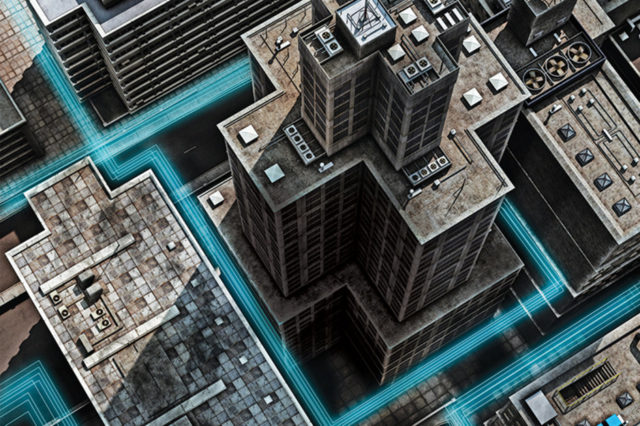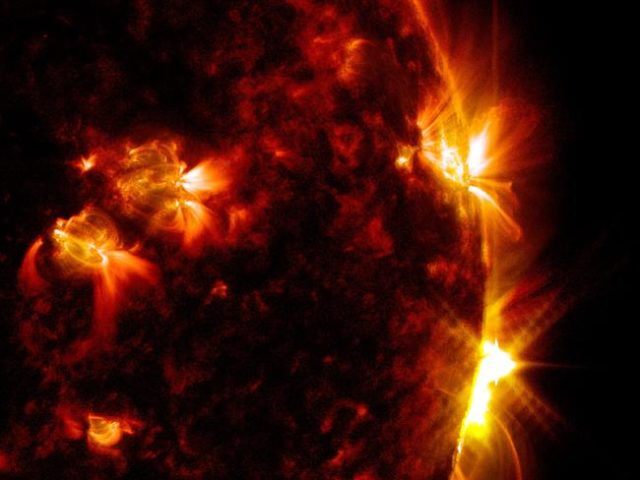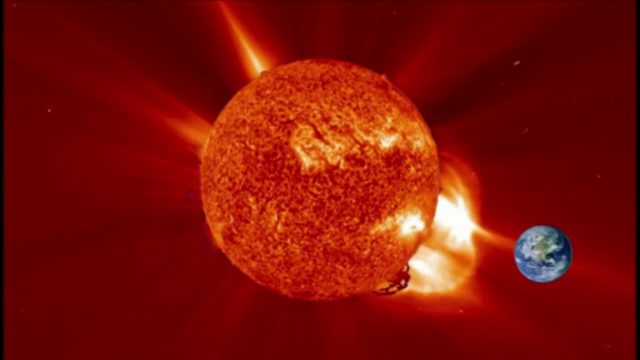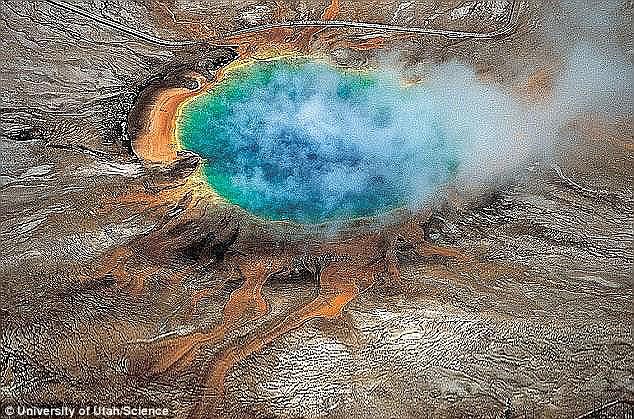In today’s edition of Outside the Box TV, Alex Ansary encourages you to find ways of learning to defend yourself from psychic warfare utilizing internet videos, podcasts and blogs. Do some research and find out the great deal of information that is out there already and increasing by the month!
How to Stay POSITIVE when WAKING up to REALITY
In this edition of Outside the Box TV, Alex Ansary discusses the power of current human potential in the face of potential future outcomes and realites.
Meditation and Nature Healing for Psychic Protection in the age of Social Media Internet Addiction
Alex Ansary shares his recent thoughts on the need for a strong mind body and spirit when surfing the internet today.
The Effect of Artificial Magnetic Field Energy on the Spirit in these High Tech Dark Ages
Alex Ansary discusses the effect of living in dense population centers of today’s high tech day and age and the potential consequences to general health.
A Digital Voice in the Online Wilderness
Using the technology while we can as a digital voice of reason in the brave new world’s online wilderness.
WARNING! UnChecked Internet Addiction can Lead to Socially Engineered Population
Many of the problems society is facing has come about through its own social media and other online addictions.
SEEING THROUGH THE DISINFOTAINMENT
Please sign up for this sites newsletter @ www.tinyurl.com/otbtv!
WHAT IS THE FUTURE OF YOUTUBE?
Some thoughts on youtube as I watch the problems happening to all kinds of channels at this time.
Solar Maximum and Cycles of World Wars – Ebook Narration
This is part 1 of my narration of my 2013 ebook, only recently posted to Amazon here:
This Seems to be a Period of a Micro Spiritual Awakening within the Greater Whole (audio)
I have gotten a lot of positive response in the last few weeks and months to this kind of commentary.
Scientists Suggest Aliens Could be Running Surveillance on Earth and us Humans
What is we are being observed in the same way we look through our own microscopes?
Major World Events and the Largest Solar Flare in a Decade
Major events, emotions, and solar activity and the one guy on youtube that notes….where X marks the spot.
The Spiritual Attacks began in my Childhood….and later as I Joined Youtube
Some brief thoughts on what I have learned from observing audience behaviors over time, in particular those that have tried to get close. Also some commentary on those that want to help but are hit with psychic attack if they offer friendship in the public domain and don’t heed my warnings to keep the offers of friendship on the downlow for their own mental well being. Many that watch this channel are unaware of the forces of darkness that also watch this channel. Instead many call me crazy but turn out infected by the parasites going from fan to hater. This now needs further discussion.
Solar Eclipse Presents First Major Test of Power Grid in Renewable Era
As Monday’s total solar eclipse sweeps from Oregon to South Carolina, U.S. electric power and grid operators will be glued to their monitoring systems in what for them represents the biggest test of the renewable energy era.
Utilities and grid operators have been planning for the event for years, calculating the timing and drop in output from solar, running simulations of the potential impact on demand, and lining up standby power sources. It promises a critical test of their ability to manage a sizeable swing in renewable power.
Solar energy now accounts for more than 42,600 megawatts (MW), about 5 percent of the U.S.’s peak demand, up from 5 MW in 2000, according to the North American Electric Reliability Council (NERC), a group formed to improve the nation’s power system in the wake of a 1964 blackout. When the next eclipse comes to the United States in 2024, solar will account for 14 percent of the nation’s power, estimates NERC.
For utilities and solar farms, the eclipse represents an opportunity to see how well prepared their systems are to respond to rapid swings in an era where variable energy sources such as solar and wind are climbing in scale and importance.
Power companies view Monday’s event as a “test bed” on how power systems can manage a major change in supply, said John Moura, director of reliability assessment and system analysis at the North American Electric Reliability Corp.
“It has been tested before, just not at this magnitude,” adds Steven Greenlee, a spokesman for the California Independent System Operator (CISO), which controls routing power in the nation’s most populous state.
CISO estimates that at the peak of the eclipse, the state’s normal solar output of about 8,800 MW will be reduced to 3,100 MW and then surge to more than 9,000 MW when the sun returns.
CISO’s preparation includes studying how German utilities dealt with a 2015 eclipse in that country. Its review prompted the grid overseer to add an additional 200 MW to its normal 250 MW power reserves.
“We’ve calculated that during the eclipse, that solar will ramp off at about 70 MW per minute,” said Greenlee. “And then we’ll see the solar rolling back at about 90 MW per minute or more.”
Power utilities say the focus will be on managing a rapid drop off and accommodate the solar surge post the eclipse. Utility executives say they do not expect any interruption in service, but are prepared to ask customers to pare usage if a problem arises.”We want to assure our customers that we have secured enough resources to meet their energy needs, even with significantly less solar generation on hand,” said Caroline Winn, chief operating officer at utility San Diego Gas & Electric Co.
In the Eastern United States, utilities will have more time to watch the results of their Western counterparts. PJM Interconnection, which coordinates electricity transmission among 13 states from Michigan to North Carolina, says non-solar sources such as hydro and fossil fuel can easily supplant the 400 MW to 2,500 MW solar loss, depending on the cloud cover.
For small-scale solar providers, the eclipse is a drop in the revenue bucket. Ron Strom, a North Carolina real estate developer, sells the power from a 58 kilovolt system atop a commercial property in Chapel Hill to Duke Energy.
“The event may cost me eighteen cents or thereabouts if my panels don’t produce solar for three hours,” said Strom.
NASA’S Risky Plan To Save US From Yellowstone
Government officials have been closely monitoring the activity in the Yellowstone caldera.
However, scientists at NASA have now come up with an incredibly risky plan to save the United States from the super volcano.
A NASA scientist has spoken out about the true threat of super volcanoes and the risky methods that could be used to prevent a devastating eruption. Lying beneath the tranquil and beautiful settings of Yellowstone National Park in the US lies an enormous magma chamber, called a caldera. It’s responsible for the geysers and hot springs that define the area, but for scientists at NASA, it’s also one of the greatest natural threats to human civilization as we know it.
Brian Wilcox, a former member of the NASA Advisory Council on Planetary Defense, shared a report on the natural hazard that hadn’t been seen outside of the agency until now. Following an article published by BBC about super volcanoes last month, a group of NASA researchers got in touch with the media to share a report previously unseen outside the space agency about the threat Yellowstone poses, and what they hypothesize could possibly be done about it.
“I was a member of the NASA Advisory Council on Planetary Defense which studied ways for NASA to defend the planet from asteroids and comets,” explains Brian Wilcox of Nasa’s Jet Propulsion Laboratory (JPL) at the California Institute of Technology. “I came to the conclusion during that study that the supervolcano threat is substantially greater than the asteroid or comet threat.”
Yellowstone currently leaks about 60 to 70 percent of its heat into the atmosphere through stream water which seeps into the magma chamber through cracks, while the rest of the heat builds up as magma and dissolves into volatile gasses. The heat and pressure will reach the threshold, meaning an explosion is inevitable. When NASA scientists considered the fact that a super volcano’s eruption would plunge the earth into a volcanic winter, destroying most sources of food, starvation would then become a real possibility. Food reserves would only last about 74 days, according to the UN, after an eruption of a super volcano, like that under Yellowstone. And they have devised a risky plan that could end up blowing up in their faces. Literally.
Wilcox hypothesized that if enough heat was removed, and the temperature of the super volcano dropped, it would never erupt. But he wants to see a 35% decrease in temperature, and how to achieve that, is incredibly risky. One possibility is to simply increase the amount of water in the supervolcano. As it turns to steam. the water would release the heat into the atmosphere, making global warming alarmists tremble.
“Building a big aqueduct uphill into a mountainous region would be both costly and difficult, and people don’t want their water spent that way,” Wilcox says. “People are desperate for water all over the world and so a major infrastructure project, where the only way the water is used is to cool down a supervolcano, would be very controversial.”
So, NASA came up with an alternative plan. They believe the most viable solution could be to drill up to 10km down into the super volcano and pump down water at high pressure. The circulating water would return at a temperature of around 350C (662F), thus slowly day by day extracting heat from the volcano. And while such a project would come at an estimated cost of around $3.46 billion, it comes with an enticing catch which could convince politicians (taxpayers) to make the investment.
“Yellowstone currently leaks around 6GW in heat,” Wilcox says. “Through drilling in this way, it could be used to create a geothermal plant, which generates electric power at extremely competitive prices of around $0.10/kWh. You would have to give the geothermal companies incentives to drill somewhat deeper and use hotter water than they usually would, but you would pay back your initial investment, and get electricity which can power the surrounding area for a period of potentially tens of thousands of years. And the long-term benefit is that you prevent a future supervolcano eruption which would devastate humanity.”
Of course, drilling into a super volcano comes with its own risks, like the eruption that scientists are desperate to prevent. Triggering an eruption by drilling would be disastrous.
“The most important thing with this is to do no harm,” Wilcox says. “If you drill into the top of the magma chamber and try and cool it from there, this would be very risky. This could make the cap over the magma chamber more brittle and prone to fracture. And you might trigger the release of harmful volatile gases in the magma at the top of the chamber which would otherwise not be released.”
The cooling of Yellowstone in this manner would also take tens of thousands of years, but it is a plan that scientists at NASA are considering for every super volcano on earth.













